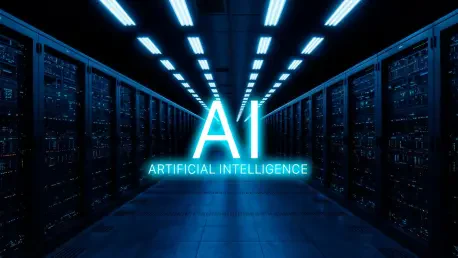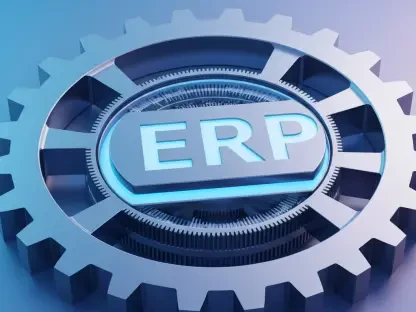In the fast-evolving world of enterprise technology, Databricks One is pioneering a new era for data analytics accessibility. Anand Naidu, a development expert with a wealth of experience in both frontend and backend development, shares deep insights into how Databricks One is transforming enterprise data access, aligning with strategies like Microsoft’s M365 Copilot. This interview explores both the technological innovations and the strategic maneuvers shaping the future of data analytics.
Can you explain the inspiration behind Databricks One and how it relates to Microsoft’s M365 Copilot strategy?
The inspiration behind Databricks One is largely drawn from Microsoft’s M365 Copilot strategy, where the focus is on reimagining user interfaces with generative AI at the core. Unlike traditional apps-based interfaces, it shifts to a task-driven approach, enabling users to engage with data and AI tools without needing to dive into code. This mirrors the Copilot strategy but targets enterprise data and AI specifically, opening up these resources to a broader audience by simplifying interaction through AI and automation.
How does Databricks One reimagine the user interface for enterprise data and AI compared to traditional methods?
Databricks One is designed to provide a seamless, no-code user experience. Instead of requiring technical expertise, it leverages AI to offer a conversational interface. Users can interact with their data through intuitive dashboards and conversational assistants like Genie, making complex analytics accessible to non-technical individuals. This user-centric design moves away from traditional, manual data processing to an embedded experience within daily workflows.
What are the main goals of Databricks One in terms of democratizing analytics for business users?
The primary goal is to make analytics accessible to everyone in an organization, not just data scientists and IT professionals. By offering tools like AI/BI dashboards and conversational assistants, Databricks One enables business users to perform sophisticated analytics tasks with ease. This democratization empowers teams to make data-driven decisions more efficiently and embed analytics directly into their workflow.
How do the AI/BI Dashboards and Genie conversational assistant work within Databricks One?
The AI/BI Dashboards allow users to create and interact with data visualizations without needing to write code, offering a more visual and intuitive understanding of data insights. Genie, the conversational assistant, further enhances this by allowing users to ask questions and explore data using natural language. This approach not only simplifies data access but also aids in generating insights faster through an intuitive, dialogue-based interaction.
In what ways does Genie improve data interaction through natural language processing?
Genie transforms the way users interact with data by understanding business-specific semantics and refining responses based on queries posed in natural language. This makes it more intuitive for users to drill into data insights without needing technical skills, enhancing user engagement by acting as a direct line to data insights through everyday language.
Can you provide examples of use cases for Databricks Apps within the One platform?
Databricks Apps can package complex workflows into a user-friendly application, ideal for specific business cases. For instance, a retail company can build an app that integrates sales data with customer feedback in real time, providing actionable insights on consumer trends. It’s a versatile tool for organizations wishing to customize their data interactions without investing heavily in custom code or solutions.
What are some limitations users might face with Databricks One compared to the full Data Intelligence platform?
While Databricks One offers substantial tools for non-tech users, it doesn’t encompass all advanced features of the Data Intelligence platform. Users may find limitations in terms of complex data manipulation capabilities and access to enterprise-grade features such as advanced security settings. The full platform remains necessary for those needing extensive customization or handling large-scale data operations.
How does Databricks One aim to increase the stickiness of Databricks’ products within enterprises?
Databricks One creates a strong dependency through its ease of use and integration into everyday business processes. As it centralizes metadata within the platform and embeds itself in daily workflows, users start relying on it for decision-making. This integration makes it challenging for enterprises to switch platforms once their teams are accustomed to the time-saving, intuitive access it provides.
What sets Databricks One apart from similar offerings by competitors like Snowflake and Microsoft?
Databricks One stands out by deeply embedding AI and BI tools directly within its lakehouse platform, which is a cohesive environment for data management and analysis. This embedded approach differs from others that might offer standalone tools. By ensuring seamless integration with existing enterprise data infrastructure, its offerings remain consistent and holistic.
How does the free edition of the Data Intelligence platform fit into Databricks’ overall strategy?
The free edition is a strategic move to engage potential users early, providing them a no-risk opportunity to explore Databricks’ capabilities. It serves as an introduction to the ecosystem, encouraging adoption by offering a glimpse into its power. This strategy helps build a loyal user base by lowering entry barriers and allowing users to familiarize themselves comfortably with its functionalities.
What are the limitations of the free edition in terms of computing resources and enterprise features?
The free edition is limited to basic computing resources, restricting the number of jobs or apps a user can execute. It lacks enterprise-level features like robust security or the ability to scale as needed, which can be a drawback for organizations with more demanding data needs. However, these limitations are intentional, acting as a stepping stone to entice users toward the full platform.
How does the introduction of Databricks One impact the competitive landscape in the data and analytics space?
The launch of Databricks One marks a significant shift by placing power in the hands of non-technical users, challenging competitors to step up their accessibility strategies. This democratization of analytics invites more players into the data insights arena, pressuring rivals to innovate further while reinforcing Databricks’ position as a leader in this transformation. The challenge will be for competitors to match the integration and user-friendliness that Databricks One offers.









